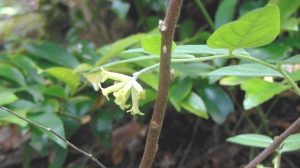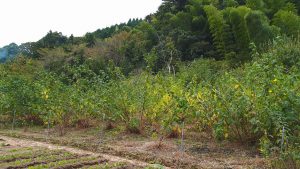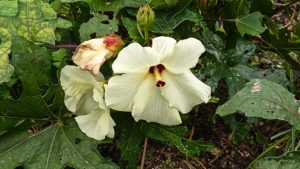Gampi is one of the original materials in Japan. The Gampi paper has been called "King of paper". The oldest, dated on AD702, remaining paper in Japan was made from Gampi.
The color is slightly brownish, if it's not chemically bleached.
The surface is slick and shiny, plus very strong. The fibre is much shorter than Kozo's, roughly up to 3mm. This short fibre can be interlocked tightly, for making strong paper. Also, it has a strong resistance to damage of bugs.
The plant can't be cultivated on the farm. Some districts have been trying to grow it, but not succeeded until now. It's available only in the wild, and it's becoming rare even in the mountain recently. Therefore, people have to climb up the deep mountains to get it.
Many people loved it in history and the same at the present. Although it is hard-to-get, it should be conveyed to the future.
Related Topics
Material: Mitsumata 三椏/ミツマタ
Mitsumata belongs to the “Thymelaeaceae” of plants genus family, in the same group with Gampi. The name means “three-pronged”, because of its branch shape.The history as paper material is not very old, likely since around 1700. (There is also another academic report that Mitsumata had been mixed up with Gampi […]
Read MoreMaterial: Gampi 雁皮/ガンピ
Gampi is one of the original materials in Japan. The Gampi paper has been called “King of paper”. The oldest, dated on AD702, remaining paper in Japan was made from Gampi.The color is slightly brownish, if it’s not chemically bleached.The surface is slick and shiny, plus very strong. The fibre […]
Read MoreMaterial: Kozo 楮/コウゾ
Kozo is a kind of mulberry species, botanical point of view it is hybrid of “Broussonetia kazinoki” and “Broussonetia papyrifera”. It is the most popular material, roughly more than 90% of Washi since 1000 years ago. Generally, there are six species as below, classified in two groups. Kozo’s fibre is […]
Read MoreMaterial: Neri (Dispersant) ネリ
“Neri” is the function name, what is used for well-melt of fibre when for scooping. Sometimes it’s easily misunderstood, the Neri is not adhesive, it works as a dispersant. Neri is highly viscous, but no glueing. The artisan mixes fibre and Neri in the vat. For the moment of scooping, […]
Read More





